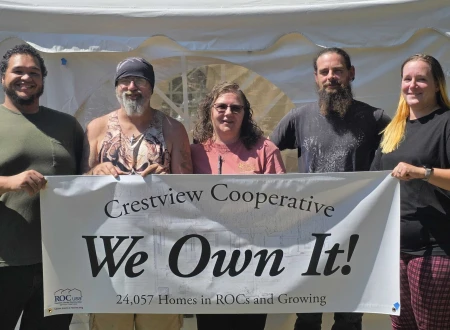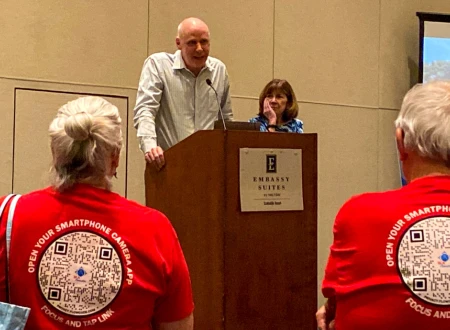ROC USA®, the nonprofit social venture with a mission of scaling resident-owned communities (ROCs), is demonstrating strong and consistent impact.
In 2016, ROC USA Network’s eight affiliated Technical Assistance Providers helped 16 low- and moderate-income resident groups acquire their manufactured (mobile) home communities and preserve more than 1,300 homes. ROC USA Network now represents 195 ROCs and more than 12,000 homeowners in 14 states.
Increasing the number of ROCs is important to delivering the security of ownership to more communities but it is consistent impact across all communities that’s most important.
Homeowners join together and buy their community for a host of reasons but the universal goal is affordable site rents. So every year, we ask: How do monthly lot rents in ROCs compare to other similar communities in the local market area over time?
To answer that question, ROC USA contracts with a third-party appraiser that specializes in the sector for an objective assessment of each market. The studies are done every five years for every ROC financed by ROC USA Capital.
ROC USA Capital financed 13 new ROCs in 37 months between December 2008 and 2011. The appraiser has analyzed market rents for all 13 ROCs over the last three years.
I don’t have permission to disclose any community’s result by name though we do share their report with them for their own use. The results for the group are consistent with my last report when the sample size was just seven:
- 11 of 13 ROCs have lot rents below market and 2 of 13 have lot rents equal to market after 5 years of ownership;
- ROC rents range to as much as $86 per month (17%) below market; and,
- The average annual increase in ROC site fees is $3.38 per year, or just under 1.0% per year.
On this last bullet point, we ask, “How does 1% per year compare to commercial communities?”
Unfortunately, there is no single industry data point on increases. And, communities vary greatly by type. We have the appraiser look closely at type when comparing rents in the study cohorts but a segmented regional or national study that would provide apples-to-apples comparison is not available.
We do have an appraisal from one of the 13 ROCs that reported rent increases before it became a ROC:
| Rental Increase History Before Becoming a ROC | |||||
|---|---|---|---|---|---|
| 2006 | 2007 | 2008 | 2009 | Current | |
| Rent | $360 | $370 | $380 | $390 | $400 |
| Increase ($) | $5 | $10 | $10 | $10 | $10 |
| Increase (%) | 1.4% | 2.7% | 2.6% | 2.6% | 2.5% |
It actually matches anecdotally what I have heard countless times from homeowners, “it increases $10 to $20 every year.” In that subject property, $10 represented 2.5% annual increases, more or less.
I think this is the next place we need to go in terms of research – we need to put these ROC results against the market and see how it stands up. I’m pretty confident it will.
Further results show that none is charging more than market rent after five years; that indicates generally good planning and management the resident group and good support from their ROC USA Network Certified Technical Assistance Provider.
The 13 ROCs also invested a total of $4.5 million in community improvements during their first five years of ownership, with a median investment of $153,000 and a range of $0 to $1.5 million. (The $0 means they’ve not drawn from reserves for improvements though they do have reserves. The ROC has likely made improvements from operating cash instead.)
Last, there’s one critical element that could easily go unrecognized: Each of these 13 ROCs has good financial discipline.
Each of the 13 ROCs in the study is setting aside reserves consistent with their Capital Improvement Plan, undergoing annual audits or reviews, and adhering to debt service coverage ratios (aka annual surpluses that stay in the community).
That sounds like banker speak but it’s really important. It’s not enough to say “rents are at or below market” if below the surface they are operating poorly.
We take a disciplined approach for the good of the entire community and movement. Because each ROC will need to be refinanced, they will need to present a strong case for the best financing terms, just like any other business borrower. Good financial discipline is a must and frankly ROC members get it.
Bottom-line: These ROCs are financially disciplined and performing well at and below market rents all while improving their neighborhoods. Year three results were consistent with earlier results, giving me further confidence we are on the right track to meet everyone’s goal of economically secure and affordable communities over the long-run.
ROC on!






